"HoroSwitch"
I've put together a nifty 75-ohm switchbox for wide bandwidth video
switching; in particular, component video for hi-def TV. It's
actually a 4-input mechanically-switched multiplexer. The thing
has lots of bandwidth, and good isolation, as illustrated by the
performance graphs that follow. My thanks to Joel Cohen, Jay Trieber,
Dave Schneider, and Jim MacArthur for helpful suggestions.
Here's an illustrated tour:
The Inside
I used a 3-deck 12-position rotary wafer switch, with the output tied
to the wiper, and with inputs feeding 4 of the 12 inputs. It's arranged
so that only every other input position is used, the in-between ones
being grounded. In fact, I wrapped the thing around with solderable
copper foil, with slits to allow the grounded terminals to protrude
through and be soldered. The grounded shroud is also the home for the
shield braid of the RG316-style skinny teflon coax I used; however, the
particular stuff I used is actually 75-ohm impedance (it has an RG
designation, if you want to look it up).
I used FR-4 copperclad PC stuff to put some shielding between the
adjacent RCA-type (ugh!) inputs and outputs, as the picture shows. I
was worried about crosstalk, which doesn't take many pF to become
serious at high frequencies: 1pF at 100MHz is about 1.6k, so you're
only down 26dB, coupling into 75 ohms.
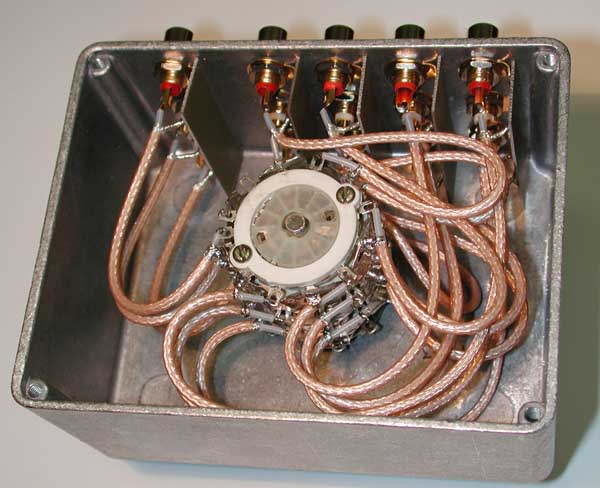
The Outside
I put the thing in a Hammond cast aluminum box. After it was built and
worked decently, I added big labels, made with a Brother P-Touch label
maker. Quick, and good enough.
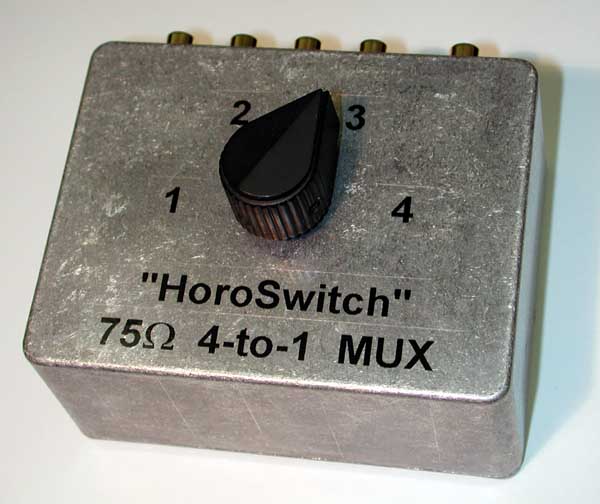
But Does It Work?
And how!! Here's a graph of its scalar transfer function, swept from
10MHz to 210MHz (20MHz/div), with a vertical scale of 1dB/div (yup,
that's one dB). I used an HP 8596E spectrum analyzer with tracking
generator, running way down at the bottom of its frequency range (it
goes to X-band for analysis, S-band for signal generator). The red
line is the 0dB reference, and the display is normalized by the response
of a straight-thru RCA f-f barrel. The signal passes through 3 feet of
AR pro-series video cable going in, and going out. At both ends I put
a resistive L-network (43.3 ohms in series, 86.6 ohms shunt) to match
75 ohms to the HP's 50-ohm impedances; the 5.7dB loss at each network
is normalized out by the calibration step.
Response is flat to better than 0.05dB to 80MHz, and 1dB to 200MHz.
Should be good enough for HD video.
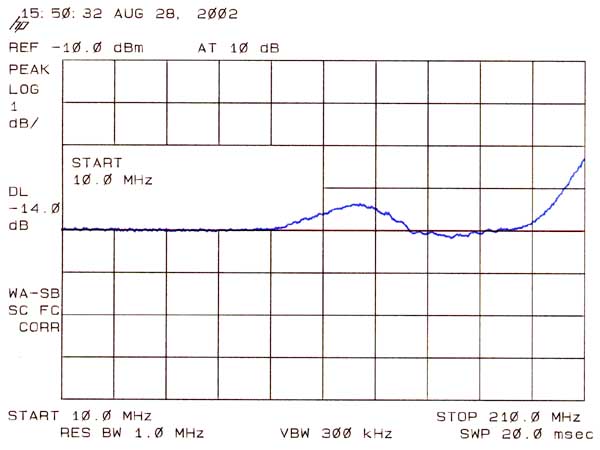
Crosstalk
Here's a graph of crosstalk from the adjacent input. Note the vertical
scale is 10dB/div, and the frequency range is as above, 10-210MHz.
For this test I terminated the unused inputs with 75 ohms, and didn't
bother with normalizing the generator. The top graph is the output when
the switch is set to select the driven input; the little bump from 10MHz
to about 40MHz is due to generator non-flatness. The bottom trace is the
output when the next input is selected.
Crosstalk is better than 60dB to 20MHz, 50dB to 75MHz, and remains better
than 40dB to 200MHz. This should be good enough: the quantization level
of "24-bit color" (8 bits per color) is only 48dB down from full level.
In actual use I've not seen any evidence of crosstalk (with 3 inputs
driven simultaneously), and the HD image quality is not degraded in any
way I can see.
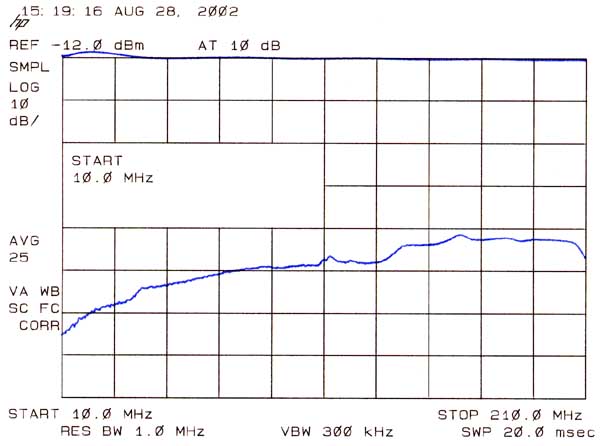
The Competition (I)
I tested one sample each of Extron's SW4AR and SW4AR-MX; these are
commercial 4-port 75-ohm RGB switches with BNC connectors. According
to the label on the bottom, the "bandwidths" are 250 MHz and 350 MHz,
respectively.
Here are plots of the scalar transfer function (top) and crosstalk
(bottom) for the SW4AR, tested and plotted in the same way as for
the "Horoswitch" (note, again, the expanded 1dB/div scale for the
transfer function):
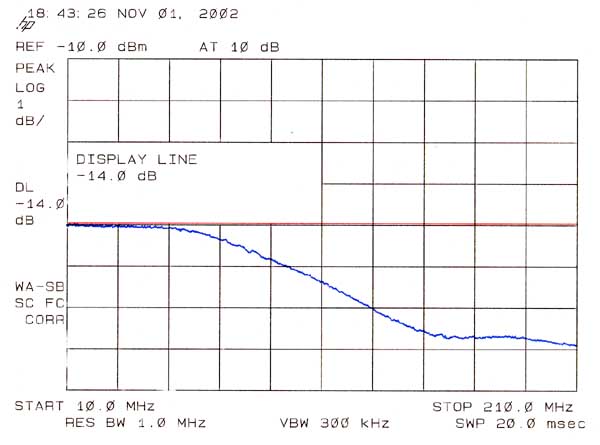
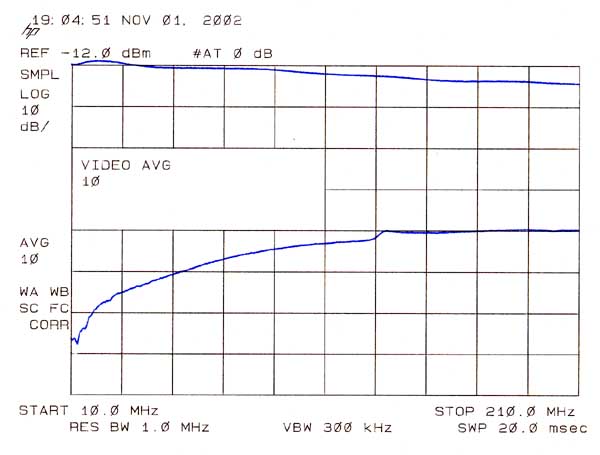
and here are the corresponding plots for the SW4AR-MX:
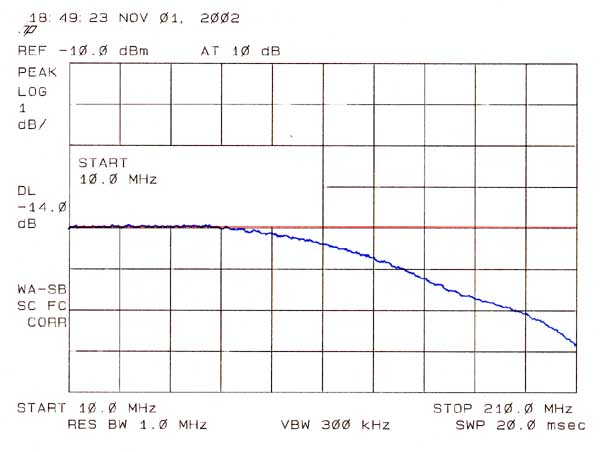
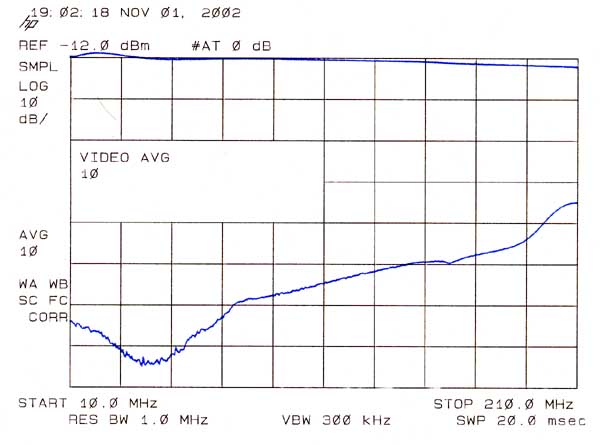
These switches have somewhat poorer flatness of response than the
homemade mechanical switch (1dB down at 100MHz and 140MHz, respectively,
compared with 200MHz), however the crosstalk performance of the
SW4AR-MX is better (-60dB to 75MHz and -50dB to 150MHz, compared with
-60dB only to 20MHz, and -50dB "only" to 75MHz); the SW4AR's crosstalk
is similar to my homemade job.
The Competition (II)
Thanks to Ramesh Vellanki and Mark Villchur, I was able to test one
sample each of a Sony (SB-V40S) and Terk (VS4) audio/video 4-port
switcher. These are inexpensive manual-switch units, with 3 RCA
connectors and one S-video connector for each of the inputs and
output. They are evidently intended to switch S-video, and/or
composite + audio (the RCA connectors are color-coded yellow, red,
and white). There is no indication that they are intended to handle
the greater bandwidths of HD component video. These two units seem
very similar on the outside; I did not open them up, as they do not
belong to me.
Here are plots of the scalar transfer function (top), and crosstalk
(first between channels, then between "colors") for the Sony unit,
tested and plotted in the same way as for the above units (note, once
more, the expanded 1dB/div scale for the transfer function):
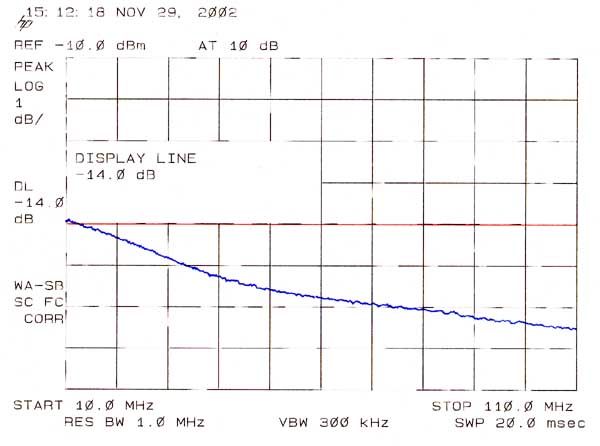
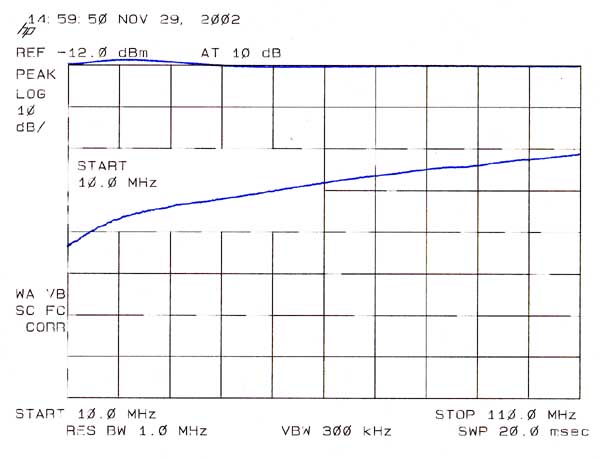
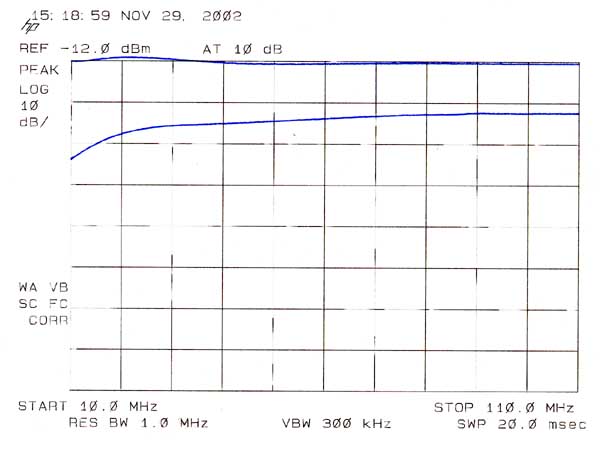
and here are the corresponding plots for the Terk:
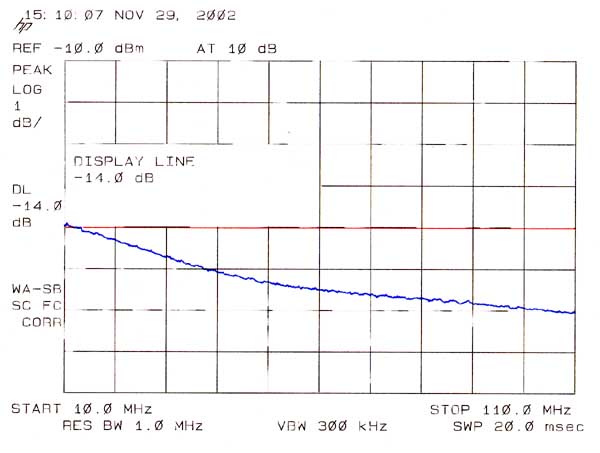
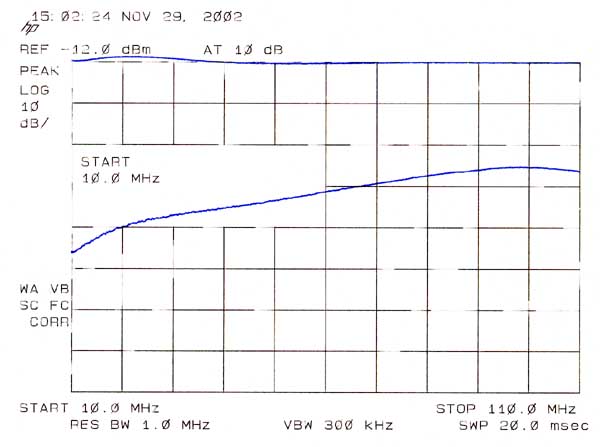
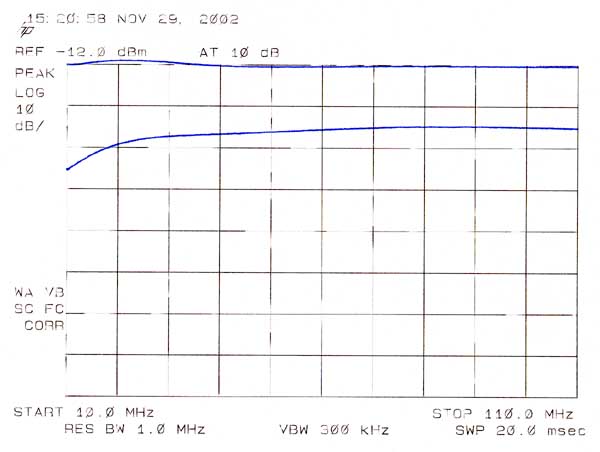
Though these switches have poorer flatness of response than either the
homemade or Extron switches, dropping 1dB by 50MHz, that is altogether
adequate for HD video; in testing, I noticed that the inputs that are
physically closest to the output have flatter response still -- the plots
above are all "worst case" situations (as are all the tests above).
The crosstalk is another matter: these inexpensive switches exhibit
significant crosstalk, particularly bewteen "colors" (poorer than 20dB
at 30MHz), and to a lesser extent between channels (poorer than 40dB
at 30MHz). The latter may be visible when unselected inputs are active.
Note that I made all tests with unused inputs/outputs terminated into
75 ohms; when I left nearby inputs or outputs open, while maintaining
termination on the tested ports (a somewhat artificial situation), the
crosstalk increased dramatically, being only 12dB (xcolor) and 25dB
(xchannel) down at 30MHz.













